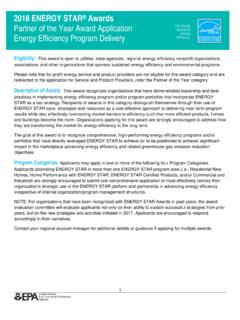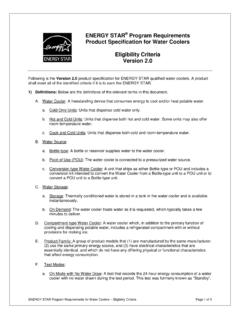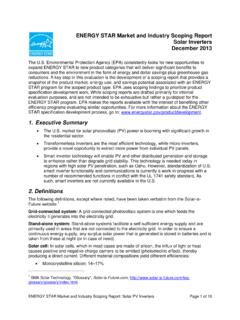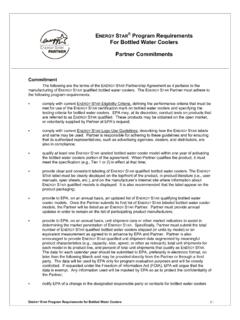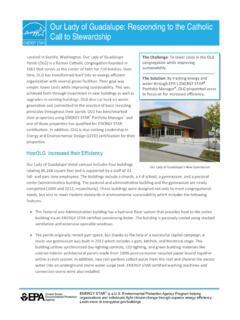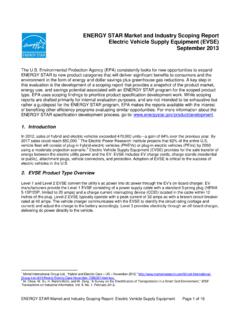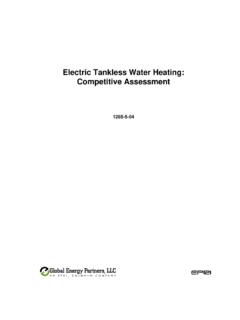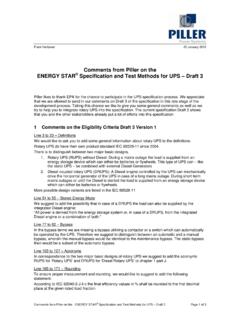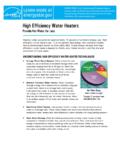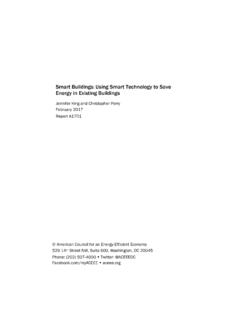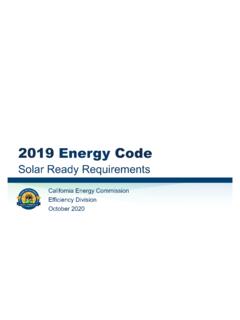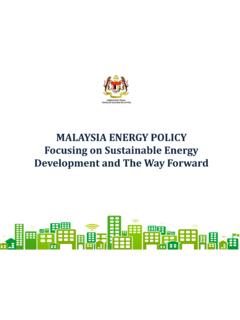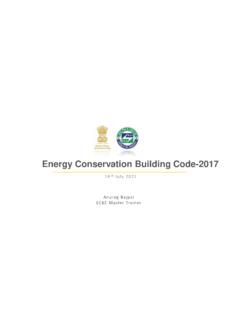Transcription of Breathe Easy with Fresh Air in the Home - Energy Star
1 MMeecchhaanniiccaall VVeennttiillaattiioonn BBrreeaatthhee EEaassyy wwiitthh FFrreesshh AAiirr iinn tthhee HHoommee Without mechanical ventilation to provide Fresh air, moisture, odors, and other pollutants can build up inside a home. Mechanical ventilation systems circulate Fresh air using ducts and fans, rather than relying on airflow through small holes or cracks in a home s walls, roof, or windows. Homeowners can Breathe easier knowing their home has good ventilation. BENEFITS OF MECHANICAL VENTILATION Better Indoor Air Quality. Indoor air can be many times more polluted than outdoor air, and the average American spends 90 percent of the day inside. Ventilation systems can significantly improve a home s air quality by removing allergens, pollutants, and moisture that can cause mold problems. More Control. When homes rely on air flow through walls, roofs, and windows for ventilation, there is no control over the source or amount of air that comes into the house.
2 In fact, air leaking into the house may come from undesirable areas such as the garage, attic, or crawl space. Mechanical ventilation systems, however, provide proper Fresh air flow along with appropriate locations for intake and exhaust. Improved Comfort. Mechanical ventilation systems allow a constant flow of outside air into the home and can also provide filtration, dehumidification, and conditioning of the incoming outside air. HOW VENTILATION SYSTEMS WORK A variety of mechanical ventilation systems are available to select from, based on local climate and the home s heating and cooling system. In addition to one of the primary systems described below, spot ventilation fans should also be provided for kitchens and baths to remove the concentrated moisture and odors that can occur in these rooms. The typical systems and recommended climates are described below: Supply Ventilation Systems Hot or Mixed Climates. Fresh air is drawn in through an air intake vent and distributed to many rooms by a fan and duct system.
3 A fan and set of ducts dedicated solely to ventilation can be used, or an outside air intake can be connected to the main return air duct, allowing the heating and cooling system s fan and ducts to distribute the Fresh air. The benefit of connecting to the return air duct is that outdoor air can be air conditioned or dehumidified before it is introduced into the home. Because supply systems continually introduce outdoor air, a home can become slightly pressurized. As a result, these systems are typically not appropriate for cold climates where there is a risk of heated indoor air being pushed through any remaining holes and cracks in the construction assembly where it could reach cold exterior surfaces, condense, and cause moisture problems. Exhaust Ventilation Systems Cold Climates. Indoor air is continuously exhausted to the outdoors with one or more fans often located in bathrooms. Because indoor air is continually drawn out, the home becomes slightly depressurized.
4 As a result, these systems are typically not appropriate for hot, humid climates where there is a risk of drawing hot outdoor air into remaining holes and cracks in the construction assembly where it could reach cool interior surfaces, condense, and cause moisture problems. Balanced Ventilation Systems All Climates. With these systems, equal quantities of air are brought into and sent out of the home. This is usually achieved using two fans one to bring Fresh air in and another to send indoor air out. The two most common systems are heat recovery ventilation (commonly referred to as HRV) and Energy recovery ventilation (commonly referred to as ERV). HRVs transfer heat from exhaust air to incoming air during the heating season and from incoming air to exhaust air in the air conditioning season to reduce the heating and cooling load and improve comfort. ERVs transfer heat and moisture between the exhaust air and incoming air.
5 This provides additional savings in the summer by reducing the moisture content of the incoming air that would otherwise have to be dehumidified with the cooling equipment or a dehumidifier. ERVs also provide additional comfort in the winter by adding moisture from the outgoing air to the incoming air to help avoid excessively dry indoor conditions. A BETTER FUTURE Energy star is a voluntary partnership between the government and more than 9,000 organizations, including more than 3,500 of the nation s home builders. Together with home buyers and their families, we are working to achieve a common goal protecting the environment for future generations by changing to more Energy -efficient practices and products today. Energy star is the government-backed symbol for Energy efficiency. It identifies new homes, buildings, and more than 50 types of products that are Energy efficient and offer the features, quality, and performance that today s consumers expect.
6 Products that can earn the Energy star include windows, heating and cooling equipment, lighting, and appliances. To learn more about Energy star , visit
